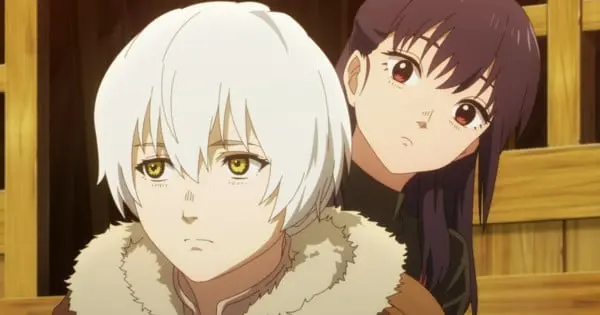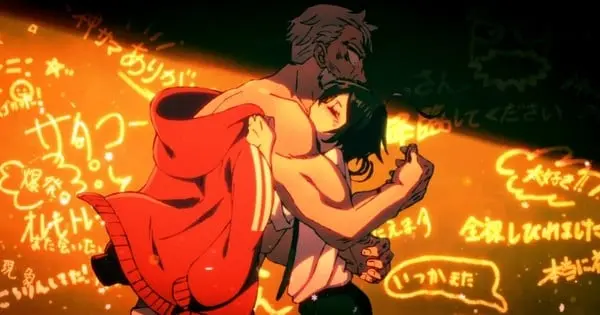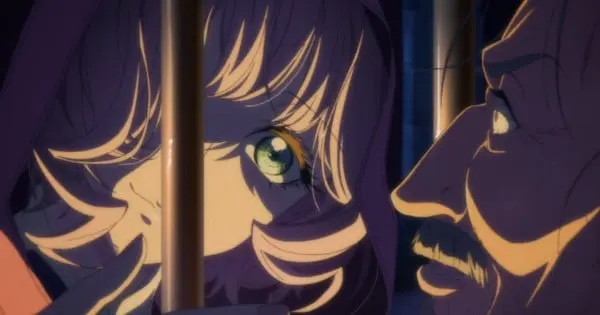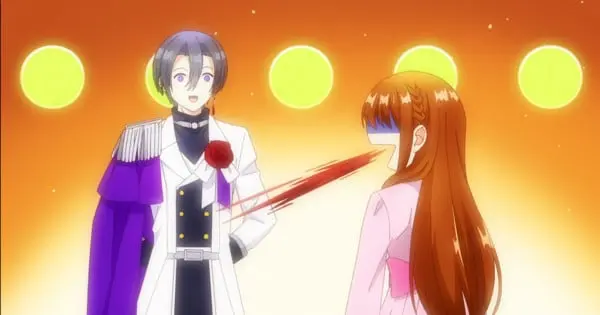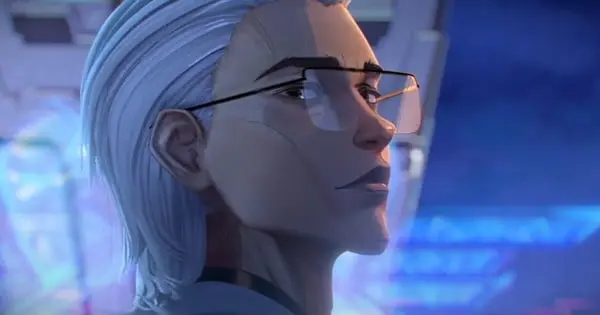In the vibrant and often perilous world of To Be Hero X, where the very concept of heroism is inextricably linked to public “trust” and its quantifiable value, every episode builds upon a complex narrative tapestry. As the third installment in the critically acclaimed To Be Hero anthology franchise, this Chinese original donghua has captivated audiences with its unique blend of 2D and 3D animation, compelling characters, and intricate power struggles. Episode 20, in particular, stands out as a pivotal and action-packed climax, profoundly impacting several key character arcs and revealing the deeper machinations within the hero-governing agencies.
This episode, released on August 16, 2025, via Crunchyroll, doesn’t just advance the plot; it delivers a series of dramatic resolutions and sets the stage for future conflicts, highlighting the devastating consequences of a system where faith in heroes is weaponized and manipulated.
The World of To Be Hero X: Where Trust is Power
At its core, To Be Hero X introduces a fascinating societal structure where individual “faith” in a person can literally transform them into a superhero. Conversely, a hero’s powers diminish or vanish entirely if public belief in them wanes. This public trust is meticulously measured and converted into data, influencing a hero’s ranking, which is prominently displayed on their wrist. Every two years, the top-ranked heroes converge for a grand tournament, their performances dictating shifts in their Trust Values and subsequent rankings. The undisputed champion, holding the highest ranking, is known simply as “X.”
This system, while seemingly straightforward, masks a deeply corrupt underworld where powerful agencies and clandestine organizations vie for control, often manipulating public perception and the very nature of heroism for their own gain. The series masterfully explores the human element behind the capes, delving into how individuals rise to fame and struggle to maintain their positions amidst a highly commercialized and politically charged environment.
Episode 20: The Battle on the Alien Ship
Episode 20 of To Be Hero X serves as the season’s major action climax, bringing to a head several ongoing narrative threads. The primary setting for this explosive encounter is an alien spacecraft, which becomes the battleground for a multi-layered conflict driven by the conflicting agendas of various powerful factions.
A Convergence of Agendas and Betrayals
The episode intricately weaves together the objectives of four major players:
- The Commission: This overarching regulatory body aims to control all superheroes, whether trust-based or fear-based. Their interest in the alien metal discovered on the ship stems from its potential to develop technology that could regulate or even eliminate both trust and fear as power sources, thereby preventing another catastrophic event like the one caused by the legendary hero-turned-villain Zero. However, their influence has waned over time due to the growing power of the individual hero agencies.
- TREEMAN (Shand’s Plot): Shand, the ruthless head of TREEMAN, has secretly been manufacturing both trust-based heroes and fear-based villains. In Episode 20, he dispatches a fear-based cloning villain and the hero Nice to the alien ship with the grim objective of eliminating everyone on board. His likely intention is to then have Nice “defeat” the villain, further solidifying Nice’s fabricated heroic image and maintaining TREEMAN’s control over the hero system.
- Mighty Glory (Uncle Rock’s Cover-Up): Mighty Glory’s representative, Uncle Rock, has a dark agenda rooted in past events. He sends E-Soul to assassinate Ghostblade and Little Johnny, along with all the scientists on the ship. This move is designed to tie up loose ends concerning the mysterious death of Little Johnny’s father, who was assassinated by Ghostblade under suspicious orders, and to halt any research into the alien metal that could expose their secrets. Uncle Rock is even prepared to take the fall for the mission’s failure, given that Ghostblade, his agency’s hero, was supposed to be protecting the crew.
- DOS (Mickey’s Manipulation): Mickey, representing DOS, prefers a more subtle approach. Rather than directly engaging, he manipulates the other agency heads into taking action. He then orchestrates the “coincidental” arrival of the recently recovered hero Queen, intending for her to intervene and resolve the chaotic battle, positioning DOS as a clean, heroic force amidst the turmoil.
Devastating Outcomes and Character Arcs
Episode 20 serves as a powerful conclusion or significant turning point for several character arcs:
- Loli’s Tragedy: Perhaps the most heartbreaking outcome falls upon Loli. Despite her aspirations to be a strong hero, she endures immense personal loss in this episode. Her father and childhood friend are killed, and her best friend is left in a coma. Crucially, she is unable to avenge them, as Nice and E-Soul, the perpetrators, emerge from the conflict seemingly unscathed and are even portrayed as heroes by the media, underscoring the corrupt nature of the system.
- Ghostblade and The Johnnies’ Setback: Ghostblade and The Johnnies, despite their efforts, fail to protect the researchers on the alien ship. This failure stains their heroic records. Furthermore, Ghostblade’s daughter, Nuonuo, sustains severe injuries, adding a personal tragedy to his professional setback.
- Nice and E-Soul’s Pyrrhic Victory: While Nice and E-Soul appear to be victorious in the immediate aftermath, their actions have significant long-term repercussions. Loli, The Johnnies, Queen, Lucky Cyan, and Ghostblade are now fully aware of their true nature and manipulative roles. This means Nice and E-Soul have inadvertently made enemies of the majority of the top heroes, setting the stage for future confrontations.
- Queen and Lucky Cyan’s Intervention: The timely arrival of Queen and Lucky Cyan is crucial in preventing an even greater catastrophe. Their intervention helps to stabilize the chaotic battle, showcasing their power and potentially their growing understanding of the underlying corruption.
- Uncle Rock’s Downfall: Among the agency CEOs, Uncle Rock suffers the greatest losses. As Ghostblade’s employer, he bears the brunt of the scandal related to the mission’s failure. More significantly, his secret objective of eliminating Ghostblade and The Johnnies, along with stopping the alien metal research, utterly fails.
The Broader Implications
The events of Episode 20 underscore the pervasive corruption within the hero system itself. The agencies’ vested interest in preventing the development of anti-Trust/Fear technology demonstrates their desire to maintain their power and influence, even at the cost of innocent lives and the integrity of heroism. By effectively blocking advancements that could bring balance, the Commission finds itself at its weakest point, forced to cancel the upcoming tournament and allow “X,” the sole independent hero, to claim the top title for a third time. This effectively renders every other hero a “loser” in the larger scheme of things, highlighting the futility of their struggles within a rigged system.
This episode not only provides shocking revelations about the origins of heroes like Nice and the manipulative tactics employed by the powerful figures behind the scenes but also deepens the emotional stakes for the protagonists. The personal tragedies faced by characters like Loli resonate profoundly, emphasizing the human cost of a world governed by such volatile and exploitative power dynamics.
Looking Ahead
Episode 20 serves as a critical juncture, altering the landscape of To Be Hero X dramatically. With major character arcs concluding or shifting course, and the true extent of the systemic corruption laid bare, the series pivots towards new challenges. The heightened awareness among several top heroes regarding the true nature of Nice and E-Soul, coupled with the Commission’s weakened state, promises a turbulent path forward. As the narrative progresses, audiences can anticipate a deeper exploration of the repercussions of this climactic battle and the continuing struggle for genuine heroism in a world where belief itself is a weapon. The non-chronological storytelling, which has been a stylistic choice throughout the series, allows for a deeper contextualization of these events as more arcs unfold, ultimately building towards the full picture of the hero tournament and the mysterious figure of X.

